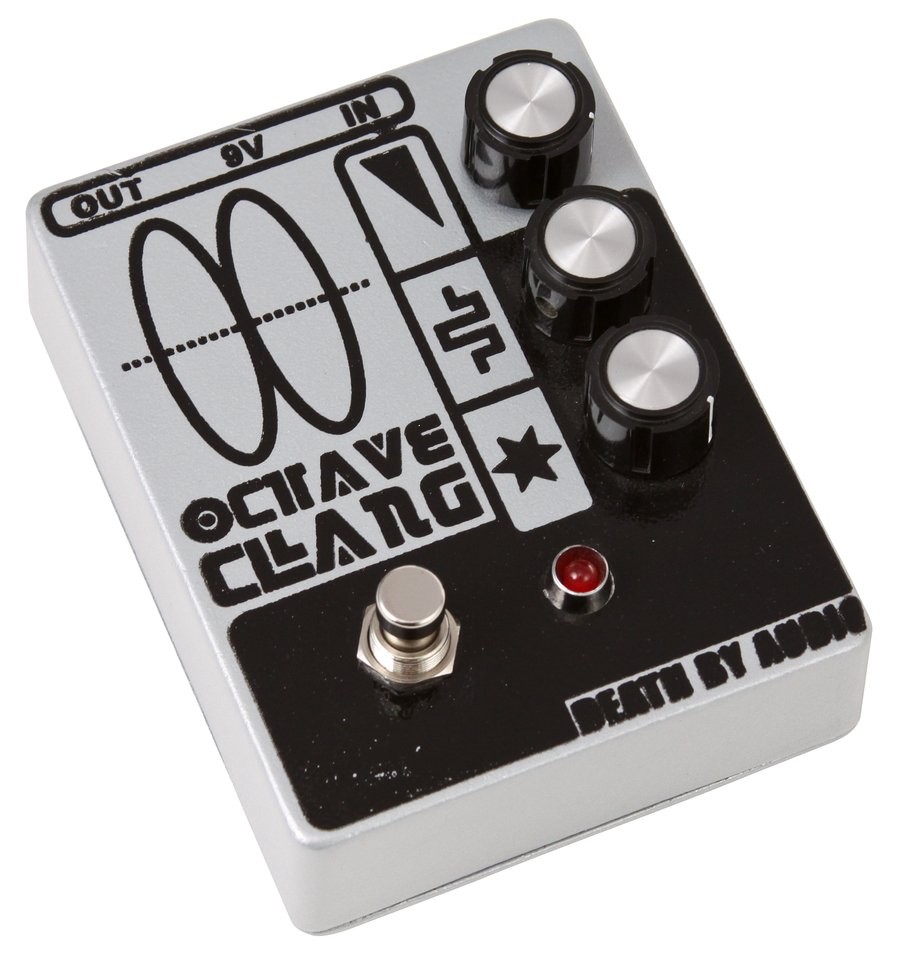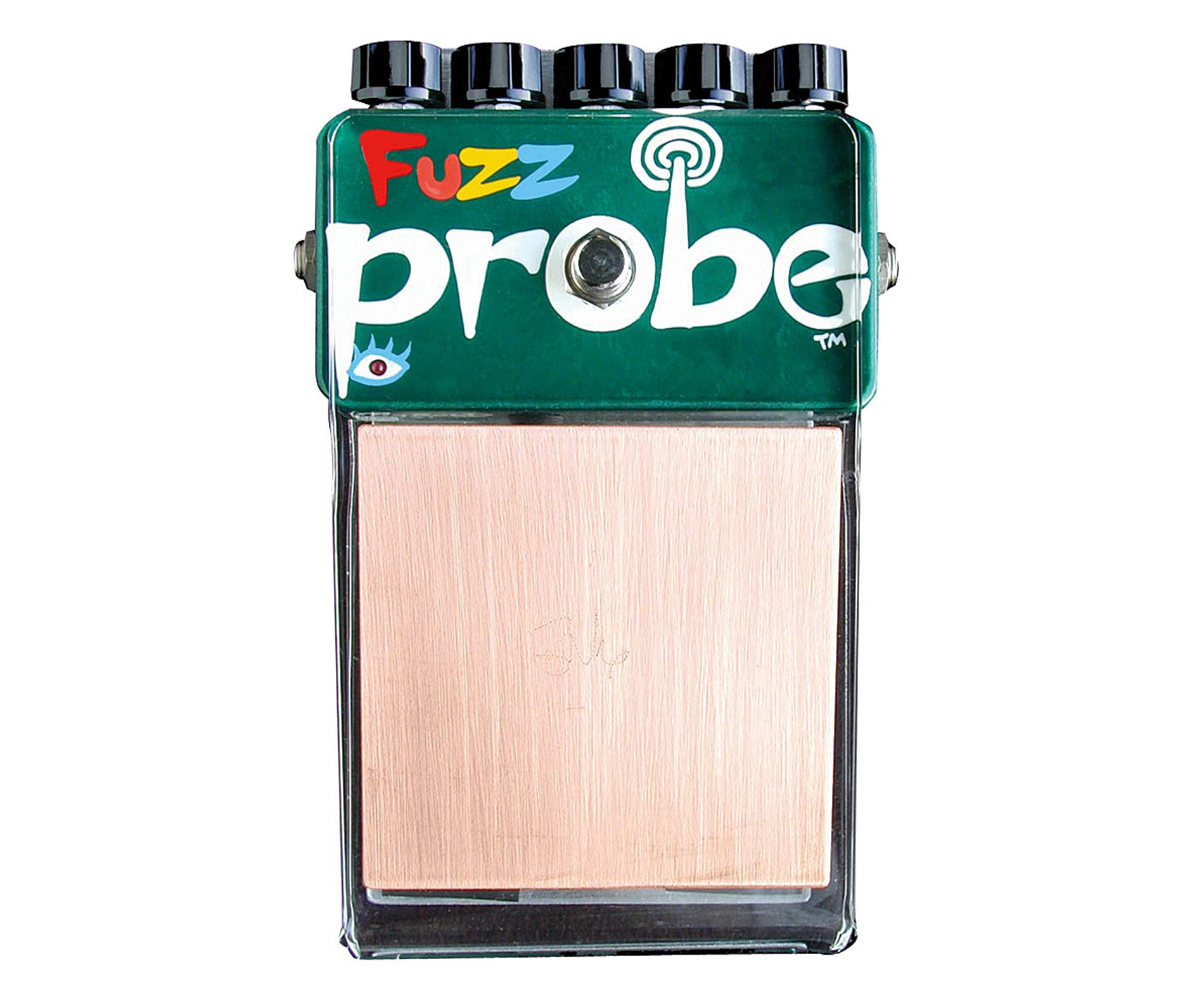+ Our brand new course with The Dillinger Escape Plan’s Ben Weinman teaches how to make a living in music without making sacrifices. Check out The Business of Uncompromising Art, out now exclusively on Soundfly.
Distortion, or dirt, as us cool guys call it, is not only used in loud garage rock. In fact, it’s used in every genre of music under the sun. It’s that crunch on the guitar, that huge, fuzz sound, the broken amp effect. There are three major types of distortion: fuzz, overdrive, and distortion, as well as bit-crushing, which emulates the distortion effect.
To put it simply, an overdrive pedal aims at simulating the creamy sound of an overdriven tube amp, whereas a distortion pedal does not try to simulate reality; it usually offers more gain and is more aggressive. A fuzz pedal, on the other hand, alters the audio signal until it is nearly a square wave and adds complex overtones by way of a frequency multiplier. Bit-crushing is when the sound quality is digitally degraded until it sounds like the tone has been distorted.
In other words, there are a lot of ways to create a familiar, yet unique, version of the same effect, and the following stompboxes all do this with aplomb!
Here at Soundfly, we love guitar pedals. But some of us have recently explored a unique tech workaround for a less cumbersome load for live performance involving Apple’s MainStage digital pedalboard, which Kaki King has been using to innovative ends on her own recent tours. Check out our free course with her called Digital Pedalboards with Kaki King to learn more about this onstage option.
There’s no doubt, however, that these unique, boutique, hand-built/bent, pieces are something special. So, by all means, go show off your wacky, colorful palette of tones with these seven distortion pedals.
Frazz Dazzler by Dr. Scientist
The Frazz Dazzler is a fuzz pedal that’s meant to take any player directly to outer space. It’s got a nasty, thick fuzz sound that can be augmented in a crazy way by the “Volts” knob. This knob allows you to glitch the circuit and get blips and gated fuzz tones — almost like you’re throwing some bit decay on there.
Perfect for: sludge rockers, Kyuss meets David Bowie, people who always need “more fuzz.”
Geiger Counter by WMD

WMD’s Geiger Counter is perfect for players who want to obliterate their guitar sound with lo-fi crunchiness. Your signal runs through a 8-bit computer that controls the sample rate and bit depth. This creates gating effects and really unique-sounding distortion by stripping away all the digital qualities from the guitar signal. It’s the digital equivalent to rerecording a piece of tape until the sound is barely recognizable.
Perfect for: scaring children, getting that broken amp sound, noise rock.
Simon the Magpie’s Patchbay DS-1

This is a modified version of the Boss DS-1 distortion pedal. Magpie has built a patch bay into this pedal to allow players to bend the internal circuit to create totally unique sounds. I’ve never seen anything like this, nor have I heard anything like this.
Perfect for: modular synth enthusiasts, fans of DIY styles and sounds, mad scientists.
Death By Audio’s Octave Clang

This deceptively complex pedal has only three knobs but can provide a refreshingly wide variety of sounds. It combines, fuzz, an upper octave, drone sounds, and ring modulation to completely rip apart your guitar tone in savage ways. I love this pedal; it’s so powerful but still gives your playing a good amount of dynamic range. When you hit a full chord, you’ll hear all the various ringing strings co-mingle in an awesome way.
Perfect for: garage rock, rock played in your garage, mechanics (because they work in a garage), rocks.
Janus by Walrus Audio

While the Janus provides a pretty standard fuzz tone with a nasty tremolo, its dual-joystick controllers are really what make this a super fun pedal to play around with. The fuzz side is based on their Jupiter fuzz, which has a Big Muff-like character combined with extra clipping and bass options, while the tremolo side is a full-bodied, sine-wave tremolo that warps the sound even further and is a rush to change on the fly with the joystick.
Perfect for: drone music, modifying the pedal live, Pac-Man fans.
Zvex Fuzz Probe Guitar by Zvex

Zvex, in my opinion, is one of the most consistently crazy pedal producers in America. This pedal in particular uses a theremin-line antenna to modify the setting of the STAB (stability) knob, which controls the pitch of the feedback, the closer or further away your foot is from the pedal — in other words, it’s a cross between a fuzz box and a theremin, which offers some wild and psychedelic tonal possibilities. In other other words, just listen to how Founder, Zachary Vex describes how this beast works:
“The antenna plate projects a field of RF energy that is affected by your foot (or other appendage), altering the circuit that generates it, and in so doing, increasing the brightness of that LED on the top of the pedal and also controlling the STABILITY (STAB) knob on the back. I could have made it just control that LED, I mean, that’s enough for some people, but nooo, I went and connected it to the stability knob too. This lets you select your favorite squealy Fuzz Factory™ setting (doesn’t the band love that?) and then mess around with the STAB knob with your foot and create little melodies and interference modulations with your guitar (doesn’t the band love that even more?).”
Perfect for: Hendrix fans, non-Hendrix fans.
Shiva by Dwarfcraft

Dwarfcraft devices have established themselves as one of the new kings of fuzz, and the Shiva is a great example why. In addition to just making a nasty, yet manageable, tone, the “Starve” knob is what sets this pedal apart. The Starve knob give you a bunch of tone-destroying, soul-crushing options. The “Octave” and “Squeal” switches also blast your amp with tons of strange and unpredictable sounds.
Perfect for: “Jack White’s early stuff” devotees, noize rock, loud solos with not a lot of notes.
That’s that! If you have any leftover cash after this holiday season, perhaps you’ll think about investing in the wackiness of your tone. Thanks for reading!
Rev Up Your Creative Engines…
Continue your learning with hundreds of lessons on songwriting, mixing, recording and production, composing, beat making, and more on Soundfly, with artist-led courses by Kimbra, RJD2, Com Truise, Kiefer, Ryan Lott, and Ben Weinman’s The Business of Uncompromising Art.




